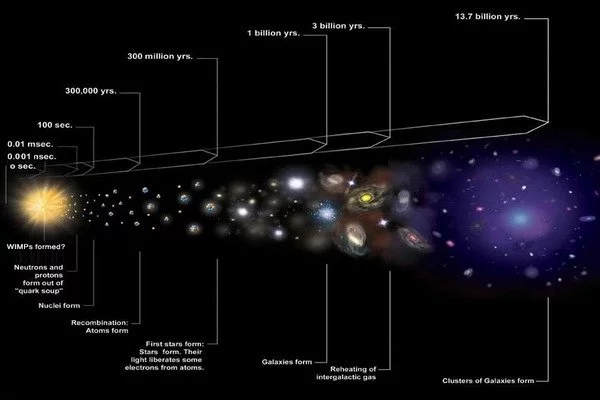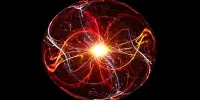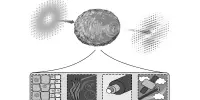Dark matter, unlike ordinary matter, does not interact with the electromagnetic force. It does not absorb, reflect, or emit light, making it extremely difficult to detect. Indeed, researchers have deduced the existence of dark matter solely from the gravitational effect it appears to have on visible matter. Dark matter appears to outnumber visible matter roughly six to one, accounting for approximately 27 percent of the universe.
A group of physicists has developed a method for predicting the composition of dark matter, which is invisible matter that can only be detected by its gravitational pull on ordinary matter and has long been sought after by scientists.
Its work, which appears in the journal Physical Review Letters, centers on predicting “cosmological signatures” for models of dark matter with a mass between that of the electron and the proton. Previous methods had predicted similar signatures for simpler models of dark matter. This research establishes new ways to find these signatures in more complex models, which experiments continue to search for, the paper’s authors note.
“Experiments looking for dark matter are not the only way to learn more about this mysterious type of matter,” says Cara Giovanetti, a Ph.D. student in New York University’s Department of Physics and the paper’s lead author.
Lighter forms of dark matter may cause the universe to expand so quickly that these elements never have a chance to form. Our analysis shows that some models of dark matter cannot have a mass that is too small, or else the universe would look different than the one we see.
Cara Giovanetti
“Precision measurements of different parameters of the universe — for example, the amount of helium in the universe or the temperatures of different particles in the early universe — can also teach us a lot about dark matter,” Giovanetti adds, outlining the method described in the Physical Review Letters paper.
Giovanetti and her co-authors focused on big bang nucleosynthesis (BBN), a process by which light forms of matter such as helium, hydrogen, and lithium are created, in the study conducted with Hongwan Liu, an NYU postdoctoral fellow, Joshua Ruderman, an associate professor in NYU’s Department of Physics, and Princeton physicist Mariangela Lisanti. The presence of invisible dark matter influences the formation of each of these elements. The cosmic microwave background (CMB) is also important to these phenomena because it is electromagnetic radiation generated by combining electrons and protons that remained after the universe formed.
The team sought a means to spot the presence of a specific category of dark matter — that with a mass between that of the electron and the proton – by creating models that took into account both BBN and CMB.

“Such dark matter can alter the abundances of certain elements produced in the early universe and leave an imprint in the cosmic microwave background by changing the rate at which the universe expands,” Giovanetti explains.
Dark matter particles have the ability to penetrate all other forms of matter, which means they may be able to travel right through our planet without losing any energy. Their impact with ordinary matter, which Earth is made of, on the other hand, may slightly impede them, resulting in a loss of energy.
In theory, there is approximately five times as much dark matter in the Universe as there is normal matter in all its forms. When the Universe was young, all forms of matter tried to gravitationally collapse, with overdense regions attracting more and more matter. Meanwhile, radiation is emitted from these increasing overdensities, and the increased pressures and densities react differently to normal matter than to dark matter. These early stages of the Universe provide the gravitational seeds that will later grow into stars, galaxies, and the Universe’s large-scale structure.
The team predicted cosmological signatures associated with the presence of specific types of dark matter in its research. These signatures are caused by dark matter altering the temperatures of various particles or the rate at which the universe expands.
Their findings demonstrated that excessively light dark matter produces different amounts of light elements than observed in astrophysical observations.
“Lighter forms of dark matter may cause the universe to expand so quickly that these elements never have a chance to form,” Giovanetti speculates. “Our analysis shows that some models of dark matter cannot have a mass that is too small, or else the universe would look different than the one we see,” she adds.















